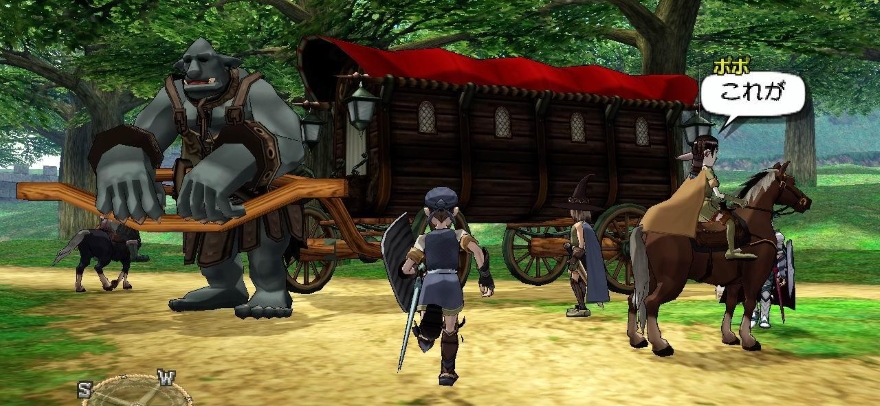
As an extremely amateur historian — and an extremely attractive archaeologist — I’ve always been fascinated with the “what ifs” of gaming’s timeline. What if Blizzard had pulled the plug on World of Warcraft during development as it did for Warcraft Adventures? What if Hellgate: London had a lot more time and resources before it launched? What if North America had embraced the free-to-play model much earlier instead of the subscription model? What if Massively was shut down by AOL and reborn as Massively Overpowered thanks to a lot of late nights and a crazy Kickstarter campaign?
Life would’ve been a lot better. Or worse. That’s the problem with counterfactual history: We can make educated guesses, but we’ll never really know. While it’s sad to see MMOs shut down due to underperformance, it’s especially maddening to contemplate MMOs canceled before they even made it to the starting gate.
Today I’m tackling probably one of the most frustrating, painful subjects that still linger amongst potential fans. I’m talking, of course, of True Fantasy Live Online, the game that could’ve shown the true potential of console MMOs. Or, y’know, not.
A killer app in the making
Console companies and game studios are forever chasing that coveted but elusive killer app — an application or game that becomes so insanely popular that it drives sales for the platform on which it appears. Think Super Mario Bros. for the NES or Final Fantasy VII for the PlayStation, and you’ll understand how this becomes sales gold.
It’s understandable that Microsoft wanted a similar hit for its fledgling Xbox Live service. While we know now that Xbox Live became an unparalleled success, it was far from a sure thing back in 2002, especially after Sega’s failure with the Dreamcast’s online service. Microsoft wanted to anchor the service around a “must have” title, and an online RPG in the vein of EverQuest and Final Fantasy XI seemed to be an option. Of course, a killer app is much easier dreamed up than developed.
Microsoft hired Japanese studio Level 5, a company experienced in RPG development, to create what was to be called True Fantasy Live Online. When first announced in 2002, the game activated many a gamer’s salivary glands. It was a lush, cel-shaded fantasy world in which players could not only go on adventures and fight for glory and loot but also socialize, fish, settle, and explore wonderful new vistas.
Eyes bigger than stomachs
True Fantasy Live Online not only looked good and was the darling of conventions early on, but its proposed feature list read like an MMO gamer’s dream come true. Level 5 wanted to include characters that evolved physically in the vein of Fable, a profession system that allowed you to join a crafting guild and put your own “personalized signature” on the items you created, and fully customizable player housing. There were even plans to have an ongoing story that would continue to shape and change the world over time.
Players were given the option to start in one of four countries, each with its own malleable history and unique conflicts. From there, they could strike out wherever they pleased, eventually hooking up with players from other countries as they reached the borders. Fantastic modes of transportation were planned, from dinosaurs to broomsticks to troll-drawn carriages.
Too good to be true? Or the work of geniuses who reached for the stars? We’ll never know.
Gamespot got a look at the title at the 2003 Tokyo Game Show and noted that communication was one of the most interesting challenges in the game. Because Microsoft didn’t want its players encumbered by a keyboard, it insisted that Level 5 utilize Xbox Live’s voice communication in the game. This is something that sounds good in theory but proved exceedingly difficult to put into practice. Consider the difficulties of providing a profanity filter (which Xbox Live today could certainly use) or how to talk long-distance. Aspects of MMO chat that we take for granted turn into a nightmarish headache when limited by voice communication only.
Downfall
I’ll give you a good rule of thumb for MMOs: If you don’t hear about a game in development for a good long while, chances are there are reasons to be seriously worried. Some may bemoan the constant “hype bombardment” that studios churn out during development, but it serves to show that title is still alive and kicking.
From the latter half of 2003 and into 2004, TFLO went dark. Press releases dried up, new information and screenshots were rare, and the community became increasingly worried. Hopeful-players had good reason to be, it turned out: In June 2004, Microsoft announced that it had made the decision to cease development. True Fantasy Live Online was dead.
What had happened? The answer, as it usually goes, was not that simple. From most reports, Level 5’s ambitious design crashed and burned when it came to implementing voice chat and network code in the game, two areas in which the studio was inexperienced. On top of that, Microsoft began to lean hard on the developer with increasing demands to hurry things the heck up. Before too long, the game was delayed from 2003 to 2004, and soon thereafter, canceled.
Level 5 president Akihiro Hino admitted that TFLO was essentially finished at that point: “The game had been showcased to the media, the world of TFLO was already complete, and within it, it was possible to live a virtual life to a degree. We continued development with the aim of making a network game that we ourselves would want to play. However, development required more time than expected, and as a result, the amount of time people would be able to play slipped considerably.”
Whatever the precise reasoning behind the project’s termination, the two companies parted ways less-than-amicably. In this case, at least, Japanese and American work styles proved incompatible, and Level 5 and Microsoft would never work together again.
The aftermath
Apart from the rare self-combusting fan, the community moved on and life continued as normal. Although we were deprived of what looked like a fascinating MMO and the opportunity to see if this could’ve broken the “console barrier,” both Microsoft and Level 5 came out of the mess OK. Xbox 360 and Xbox One have already seen several console MMOs launch and thrive on the plateform, while Level 5 hit it huge with the Professor Layton puzzle series (among others).
What if True Fantasy Live Online had gone, well, online? What if it proved every inch the killer app that Microsoft had hoped, spreading like wildfire across both the east and west? It’s tantalizing to consider that Xbox Live might’ve had its own answer to World of Warcraft, and disappointed fans who flocked elsewhere for their MMO fixes might’ve invested their bucks into Bill Gates’ wallet instead.
 Believe it or not, MMOs did exist prior to World of Warcraft! Every two weeks, The Game Archaeologist looks back at classic online games and their history to learn a thing or two about where the industry came from… and where it might be heading.
Believe it or not, MMOs did exist prior to World of Warcraft! Every two weeks, The Game Archaeologist looks back at classic online games and their history to learn a thing or two about where the industry came from… and where it might be heading.

















